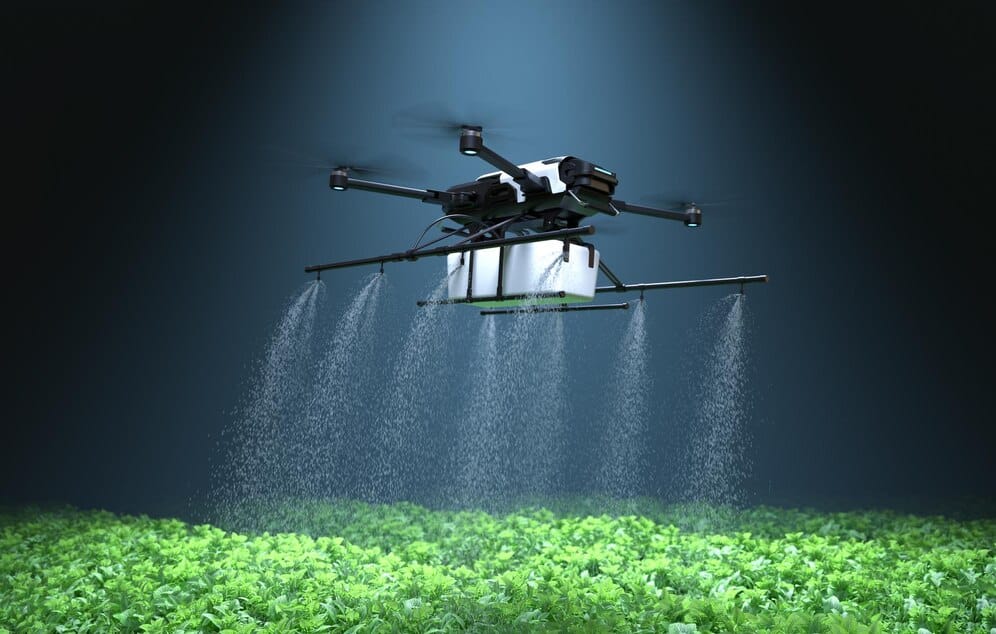The Impact of Drones on American Agriculture
In this article, we'll investigate how drones are transforming the landscape of American agriculture, from crop monitoring and management to precision farming and environmental stewardship.

Intro

Drones, also known as unmanned aerial vehicles (UAVs), are revolutionizing farming practices across the United States, offering farmers innovative tools to enhance productivity, efficiency, and sustainability in agriculture. In this article, we'll investigate how drones are transforming the landscape of American agriculture, from crop monitoring and management to precision farming and environmental stewardship.
Aerial Crop Monitoring
One of the most significant contributions of drones to American agriculture is their ability to provide real-time aerial imagery and data for crop monitoring and management. Equipped with high-resolution cameras and sensors, drones can capture detailed images of crop fields, allowing farmers to assess plant health, detect pest infestations, and identify areas of stress or nutrient deficiencies with unprecedented accuracy and efficiency.
Precision Farming
Drones play a central role in precision farming, enabling farmers to optimize inputs such as water, fertilizer, and pesticides to maximize yields while minimizing waste and environmental impact. By precisely mapping crop fields and analyzing data collected from aerial surveys, drones help farmers make informed decisions about planting, irrigation, and pest control, leading to more sustainable and cost-effective farming practices.
Automated Crop Spraying
In addition to monitoring crops, drones are increasingly used for automated crop spraying, replacing traditional ground-based spraying equipment with unmanned aerial systems that can cover large areas more quickly and efficiently. By precisely targeting areas in need of treatment and minimizing chemical drift, drones reduce pesticide usage, improve application accuracy, and minimize environmental contamination, resulting in healthier crops and soil.
Livestock Management
Beyond crop farming, drones are also transforming livestock management practices in American agriculture. Farmers use drones to monitor livestock herds, conduct aerial surveys of grazing lands, and identify potential hazards or predators, allowing for more proactive and efficient management of animal health and welfare. In remote or rugged terrain, drones provide farmers with invaluable insights and visibility that would be difficult or impossible to achieve using traditional methods.
Environmental Monitoring and Conservation
Drones are powerful tools for environmental monitoring and conservation efforts in agriculture, enabling farmers to assess soil erosion, track changes in land use, and monitor water quality in rivers, streams, and wetlands. By collecting data on ecosystem health and biodiversity, drones help farmers and conservationists make informed decisions about land management practices and habitat restoration efforts, promoting sustainable stewardship of natural resources.
Challenges and Considerations
While drones offer numerous benefits to American agriculture, their widespread adoption is not without challenges and considerations. Regulatory hurdles, privacy concerns, and technical limitations such as battery life and flight range must be addressed to realize the full potential of drones in farming. Additionally, the cost of drone technology and the need for specialized training and expertise may present barriers to entry for some farmers, particularly small-scale operators.
Future Outlook
Despite these challenges, the future of drones in American agriculture looks promising. As technology continues to advance and regulatory frameworks evolve, drones will play an increasingly integral role in shaping the future of farming. From improving crop yields and resource efficiency to enhancing environmental sustainability and resilience, drones are poised to revolutionize agriculture and help farmers meet the challenges of a rapidly changing world.
Conclusion
In conclusion, drones are transforming American agriculture by providing farmers with powerful tools to monitor crops, manage livestock, and steward the land more effectively and sustainably. By harnessing the capabilities of drones for precision farming, automated spraying, and environmental monitoring, farmers can optimize productivity, minimize inputs, and reduce environmental impact, ensuring a more prosperous and resilient future for agriculture in the United States.